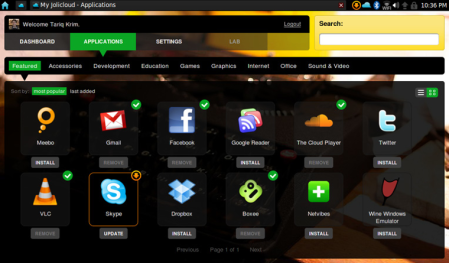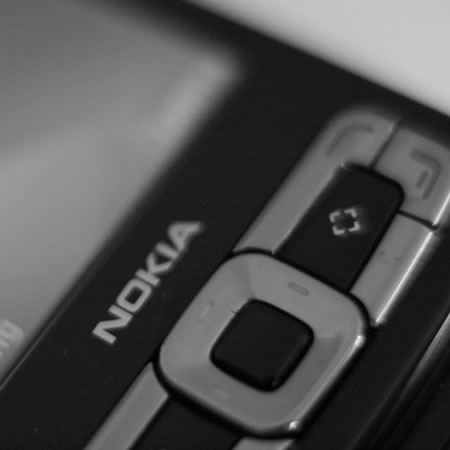I am a fan of Twitter and use it a lot, I have blogged about it a fair bit too, my blog entry on the demise of Twitter was quite popular, but I thought my piece on how I think Twitter was all about the coffee was a better article…
Ah well.
One of the things that does annoy me about Twitter is the way in which people like to dictate to you how it should be used and how you should use it.
Um no.
This is the top ten things you should never do with Twitter
10. Never create a list of people you recommend others follow
One of the the things that goes around the internet on various blogs are lists of people to follow on Twitter. For example ten mobile learning experts to follow on Twitter. Sometimes a top ten, becomes a top one hundred, or even just a directory…
I am guessing that the idea is that you follow these people because someone told you that they would be good to follow.
But why are they good to follow? Do they really make lots of useful tweets about mobile learning all the time… Or are they just interesting people to follow whom just happen to all have an expertise in mobile learning… People follow people on Twitter for a range of reasons, people use Twitter for lots of different reasons. Creating lists of people and recommend others follow them is flawed as it assumes that everyone follows people on Twitter for the same reason that you do, which we know not to be true.
I am less interested in lists of people to follow on Twitter, but much more in why people follow other people, which is why I blogged about this.
9. Never complain about the noise
The key question you have to ask before you complain about the noise, is define what noise is. Most people would guess define noise as tweets they’re not interested in, that’s fair enough.
However can you define and categorise noise?
Some tools and sites do and I am not sure if they actually understand the point of Twitter. They argue that links are not noise, and @replies are also not noise, nor are #hashtags. Anything else is noise. Some people have said that noise is a ratio between updates and followers.
@jamesclay replies to me are not noise, but as they’re not relevant to other people they would probably refer to them as noise.
So ask yourself if this Tweet from @stephenfry is noise or not noise?

For some people (or tools) it would be counted as noise for these reasons:
- it isn’t a reply
- it doesn’t contain a link
- it’s not a RT
- doesn’t mention other Twitter users through the @
For me it is not noise. I have a lot of respect for Mr Fry and I follow him on Twitter as I am interested in what he is doing and enjoy reading his Tweets.
Personally I find someone who posts links all the time is in my opinion posting noise, it’s noise to me, but maybe not noise to you, which is why you should never complain about the noise.
Some people argue that they’re not interested in whether I am having a coffee, or drinking tea, what I am doing or who I am with. Personally I always thought that was the point of Twitter!
I have written about Twitter before notably why I think Twitter is an important tool and that the informal chat side is as equally as important as the formal chat. A few people have “complained” about irrelevant tweets and I am aware of some who have stopped following others because of their so called shallow and lightweight tweets. These people in my opinion are missing the point about the real value of Twitter. I am sure that they get something from Twitter, but you have to ask the question is Twitter about following people and reading informative Tweets or is it about communication and community?
Twitter is not just about the “good stuff” it is also about the irrelevance, it is about the non-useful stuff. If all you ever post is what blog entries you have written, why would I follow you on Twitter, I might as well subscribe to your blog’s RSS feed.
I want to find out what you’re doing, but I also want to find out the mundane things as well. This makes for a more rounded conversation and community.
The problem with complaining about the noise is that one person’s noise is another person’s signal. What is noise to me, is maybe not noise to you, which is why you should never complain about the noise.
8. Never ask people not to Re-Tweet (RT)
Re-Tweeting has become a bit of an issue on Twitter recently. To RT is to basically copy what someone has said and re-broadcast it to Twitter. So why do people do it?
Well I do it and I do it for a variety of reasons.
Here’s one…

RT @JISC JISC Digital Content Conference 2009 registration now open: http://tinyurl.com/d63zl2 #jdcc09 <– sensible tag IMHO #letsusethisone
I RT’d this Tweet for two reasons, firstly I thought my followers would be interested in the fact that registration for the conference was open (and this is demonstrated in this Tweet reply) and secondly I thought that the #jdcc09 tag was a very sensible tag; though talking about tags will be the topic of another blog post.
In the main I know from Tweetwheel that though a lot of people who follow me on Twitter don’t necessarily follow each other. So if someone posts something which I think is useful (or more usually funny) I will RT it so those who follow me, but don’t necessarily follow everyone who also follows me can see the Tweet.
I also RT stuff I have posted, as a way of re-broadcasting a Tweet. For example I recently set up The Pelican Fringe , a fringe event for the Plymouth e-Learning Conference. I have posted and RT’d about it a few times now, because though people follow me, I know (as I do) don’t read every Tweet I post all the time.
The problem with RTs is that yes you may see the same thing a few times, but remember the one time you see something once and then you will value the RT. Don’t ask people not to RT, if you don’t like what they’re doing, don’t follow them, others may value their RTs.
7. Never state how many times you should post on Twitter per day
Some blogs out there have written guides on using Twitter and some of these state a number of Tweets you should post per day or per hour. What about those quiet days when I am not doing much, should I post pointless tweets just to make up the numbers? I think not.
Only post once an hour otherwise you will flood the Twitter stream…
This is pointless, as everyone has different followers and different numbers of followers.
If you only follow me, of course I am going to “spam” your Twitter feed compared to if you follow three hundred people, regardless of the number of Twitter posts I make.
If you follow me and I post too often for you (and there are days when I will) then stop following me, stop following me for that day, or stop following me full stop! At the end of the day you are in control of who and how many people you follow. Telling people how many posts they should post
6. Never tell people what is the optimum number of followers
What a pointless exercise!
Some websites state that it is not possible and you can’t deal with more than a hundred followers…
What is the difference between the number of tweets if a hundred people post one tweet and one person posts a hundred tweets? Or ten people post ten tweets?
You’re right there is no difference.
People post on Twitter for diffferent reasons and I follow them for different reasons. For example I follow M5updates which I find invaluable as I drive up and down the M5. It’s an easier way to find out the problems on the M5 as BBC Local Travel is too localised sometimes, as BBC Bristol for example only really covers Junctions 20 – 14 whereas M5updates covers all the M5 junctions from Birmingham to Exeter. However I am never going to have a conversation with M5updates, partly because I am not really interested in discussing the state of the M5 (I just need the information) and mainly as M5updates is not a person and automatically posts their tweets. If I travel elsewhere in the UK I might then follow M6updates or M4updates for a temp
Likewise I follow various e-learning people and the main reasons for this are seeing what they are doing, having discussions and conversations.
One piece of advice I would offer is that it is not only not necessary often it is not possible to read every tweet that has been posted by your followers. Twitter is not like e-mail, it is an ongoing conversation, one you can drop into, join and then leave. One of the best ways of describing Twitter is the conversations you have at a conference during the coffee break, you see some colleagues talking, drop by, converse and then move on. Rarely will you ask your fellow delegates for a recording or video of the conversation you missed.
5. Never tell people to follow (or not to follow) celebrities
At one point the only celebrities on Twitter were the geeky techy internet gliterati, people like Leo Laporte and Kevin Rose. They along came Stephen Fry and the whole world of Twitter was turned upside down. Before the end of the week we had Jonathan Ross, and within months Ashton Kutcher (who?) had a million followers and every US TV Host was “doing the Twitter”.
As I said I follow Stephen Fry, but I don’t follow Jonathan Ross.
Does it matter that I do this?
Why would you care?
4. Never just post links to your blog
Some people seem to spend their entire time on Twitter posting links to their blog on Twitter.
Hello, hello, have you not heard of RSS?
Twitter is not an RSS feed, to use Twitter in this way devalues not only Twitter but also your blog.
Now and again if you are proud of a particular blog post, when it is relevant to the conversation, it won’t be a problem but if all you ever do is post blog links and nothing else then sorry you don’t get Twitter and I am surprised you even have a blog.
3. Never post the same message to multiple places all at the same time
Some services out there allow you to post the same status update to Twitter, Facebook, Jaiku, etc… Personally this really annoys me, especially if I follow you on Twitter, are your friend on Facebook and know you on Jaiku. Do I really need to see your same update on all three sites at the same time?
It is one thing that really annoys me, well use to annoy me.
The reason (some) people do this is they have different groups of friends on each social network. Personally I think the time saved is marginal and you would be better off posting different things to different networks less often, rather than use a tool to send the same thing to all your networks more often, but that’s me.
Well the key here is that the power to stop this is in my court (as well as yours). I can unfollow people, I can stop being their friend, I can ignore them.
I can choose what I see, therefore I should make that choice, and not tell you how to post to Twitter.
What I actually do is no longer use Facebook, easiest solution.
2. Never tell people what they should post on Twitter
I really find it amusing that people feel that they know how Twitter should be used and have written guidelines on what you should post on Twitter.
Some of these guidelines indicate that you should post only important stuff and avoid the mundane. You should only post stuff that other people find interesting.
Again we have the issue of what I find interesting you may find boring and mundane. We are all different and as a result you can not say what is the right thing or the wrong thing to post on Twitter.
1. Never write a blog post telling people how they should use Twitter
Oops!











